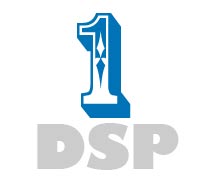 For all the noise in the past year around the demand-side platform (DSP) in display advertising, it seems worth re-visiting what this and other related trends – such as sell-side platforms, data exchanges, data management platforms, ad exchanges – are all about.
For all the noise in the past year around the demand-side platform (DSP) in display advertising, it seems worth re-visiting what this and other related trends – such as sell-side platforms, data exchanges, data management platforms, ad exchanges – are all about.
I’d say, at its core, it’s about media moving to one channel for the consumer.
Yes, it’s that “convergence” buzzword that we’ve been hearing about since the 90s. And, for the DSP, it’s converging an efficient, single channel of media (ads) that addresses the consumer.
A more traditional definition of convergence suggests media could care less about the device. Broadcast TV gets delivered through your mobile device or your IP television displays the latest hometown sports scores via a feed from your favorite sports website. The media experience converges.
Notably, the glue, which brings efficiency to convergence for media consumer and media publisher, is data and the connections it enables. Across devices, data ideally provides the consumer with control and a personalized experience based on intent.
Converging The Audience
The DSP model echoes this convergence for the digital media buyer and consumer.
With a demand-side platform, the ability to address the user depends on the use of data (often cookies) such that a user will be delivered a message across multiple channels of inventory. For example, the media buyer can deliver multiple display ads on CNN, TripAdvisor and MySpace – and it can all be shown to the same consumer.
Today, display advertising is the “early adopter” for the DSP model for many reasons including oversupply of publisher ad inventory (it’s cheap!), standardization of display ad units (it’s simple!) , the huge media dollars at stake (it’s worth it!) and innovative technology (it’s not so simple!) being built to harness a unique opportunity to message consumers.
Also, as user intent is understood through data, users can be matched to those who “look alike” bringing scale to valuable audience segments that advertisers can address. Scalable, addressable media – a marketer’s Holy Grail!
So, while the media channel converges across devices, ads converge across audience and the audience converges content.
What’s it all about? DSPs are at the leading edge of a convergence sh*tstorm.
By John Ebbert











